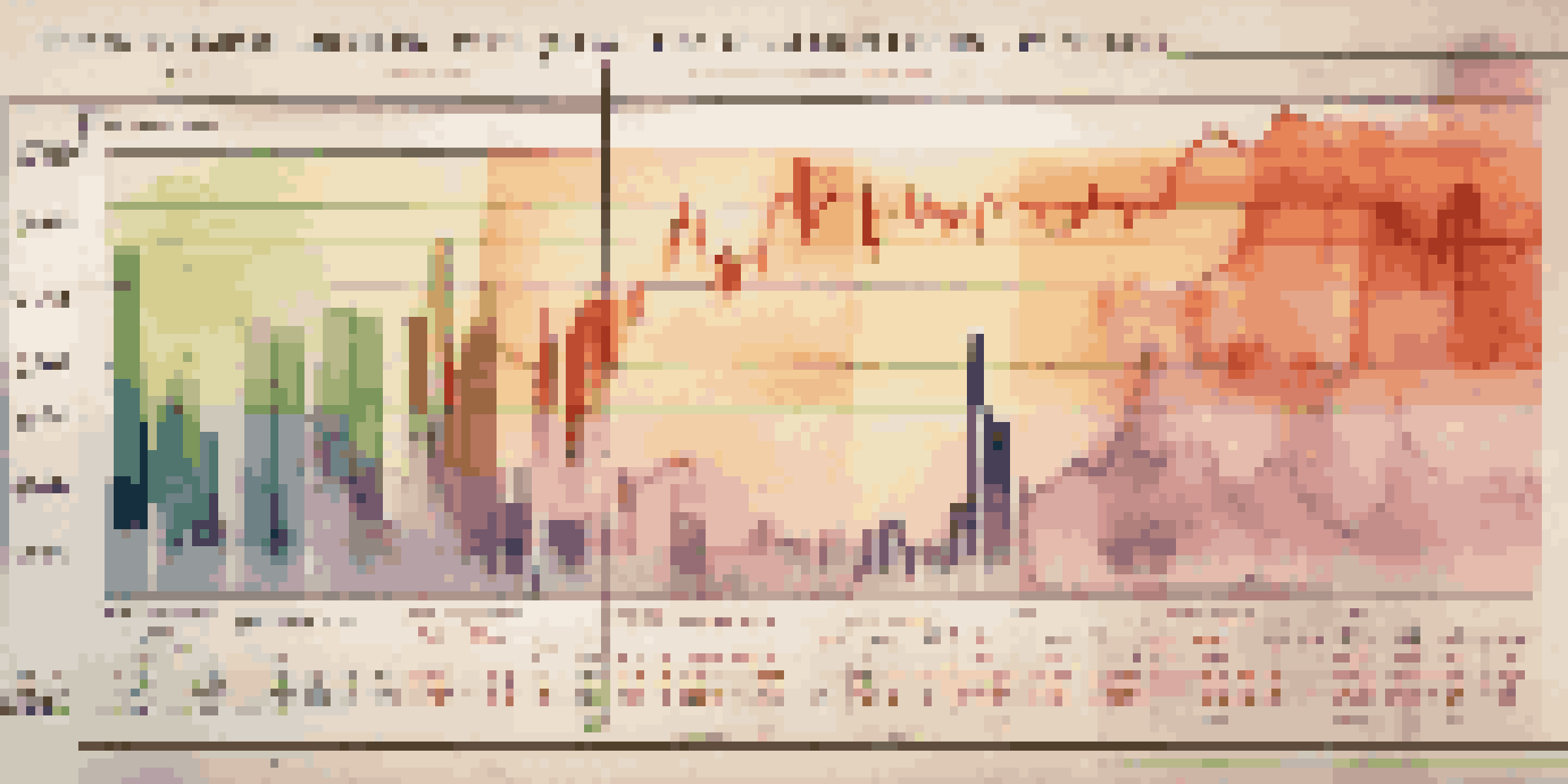How to Read Commodity Price Charts Effectively

Understanding the Basics of Commodity Price Charts
Commodity price charts are visual representations of the price movements of commodities over a specific period. These charts help traders and investors make informed decisions by illustrating trends and fluctuations. When starting out, it's essential to familiarize yourself with the different types of charts, such as line charts, bar charts, and candlestick charts.
In investing, what is comfortable is rarely profitable.
Each type of chart offers unique insights. For example, candlestick charts display the opening, closing, high, and low prices of a commodity for a given time frame, allowing you to see price momentum at a glance. Understanding what each chart conveys is crucial for effective analysis.
By grasping the fundamentals, you set a strong foundation for deeper analysis later on. Think of it like learning the basics of a sport before diving into strategies; without the fundamentals, you may miss essential insights.
Identifying Key Trends in Commodity Price Charts
Trends are the backbone of commodity price analysis. They can be classified as upward (bullish), downward (bearish), or sideways (range-bound). Recognizing these trends helps traders determine when to enter or exit a market position.

To identify trends, look for patterns in the chart, such as higher highs in an upward trend or lower lows in a downward trend. This visual cue can be as clear as spotting the path of a river winding its way through a landscape. Understanding the direction of the trend is key to making informed trading decisions.
Understanding Chart Types Matters
Familiarizing yourself with different types of commodity price charts, such as line and candlestick charts, is essential for effective analysis.
Once you identify the trend, you can align your trading strategy accordingly. Just like a surfer rides a wave, understanding the trend allows you to take advantage of market movements effectively.
Using Support and Resistance Levels Effectively
Support and resistance levels are essential concepts in technical analysis. Support refers to a price level where a commodity tends to stop falling and may bounce back up, while resistance is where the price often stops rising and may drop. Identifying these levels can give you insight into potential price action.
The stock market is filled with individuals who know the price of everything, but the value of nothing.
You can find support and resistance levels by looking for historical price points where the commodity reversed direction. Picture them as invisible barriers that traders react to, much like the walls of a room that you bump into when you try to walk through them. Understanding these levels helps you predict potential price movements.
Incorporating support and resistance into your analysis can enhance your trading strategy. It’s like having a roadmap; knowing where the boundaries are can guide you in making more strategic decisions.
The Importance of Volume in Price Chart Analysis
Volume refers to the number of contracts or shares traded over a specific period and plays a vital role in confirming price movements. High trading volume often indicates strong interest in a commodity, while low volume might suggest weakness or a lack of conviction in price changes.
When analyzing charts, pay attention to volume spikes. A price increase accompanied by high volume can signify a strong uptrend, whereas a price increase with low volume may suggest a false breakout. Think of volume as the fuel that powers price movements; without adequate fuel, the movement may not sustain.
Trends Guide Trading Decisions
Identifying market trends, whether upward, downward, or sideways, helps traders determine optimal entry and exit points.
Volume analysis can help traders gauge the strength of a trend. By combining volume with price action, you can make more informed decisions, much like a car driver who checks their fuel gauge before hitting the road.
Recognizing Chart Patterns for Better Predictions
Chart patterns are formations created by price movements on a chart and can provide valuable insights into future price behavior. Common patterns include head and shoulders, triangles, and flags, each signaling potential market reversals or continuations.
Identifying these patterns requires practice and attention to detail. For instance, a head and shoulders pattern often indicates a reversal from a bullish to a bearish trend, much like a warning sign on the road. Understanding these patterns can enhance your predictive abilities in trading.
By learning to recognize chart patterns, you can gain an edge in anticipating market movements. It’s akin to reading the weather forecast; knowing what’s coming can help you prepare and make better decisions.
Integrating Technical Indicators into Your Analysis
Technical indicators are mathematical calculations based on price and volume data that help traders analyze market conditions. Popular indicators include moving averages, RSI (Relative Strength Index), and MACD (Moving Average Convergence Divergence). Each indicator serves a specific purpose and can enhance your understanding of price movements.
For example, moving averages smooth out price data to identify trends over a specific period, while the RSI helps determine overbought or oversold conditions. Think of indicators as tools in a toolbox; each one has a unique function and can be used in different scenarios to improve your analysis.
Volume Confirms Price Movements
Analyzing trading volume alongside price changes can provide insights into the strength of a trend and the validity of price movements.
Incorporating technical indicators alongside price charts can provide a more comprehensive view of market conditions. Much like a chef using various utensils to create a delicious meal, combining different tools can lead to better trading outcomes.
Practicing Patience and Discipline in Trading
Reading commodity price charts effectively requires patience and discipline. The market can be unpredictable, and it's crucial not to rush into trades based on emotions or impulse. Take the time to analyze the charts thoroughly and wait for the right opportunities.
Developing a trading plan that outlines your strategies and risk management is essential. This plan acts as your roadmap, guiding you through the ups and downs of trading without veering off course. Remember, good things come to those who wait, especially in trading.

By practicing patience and discipline, you can improve your trading success rate. It's similar to a marathon runner who focuses on maintaining a steady pace rather than sprinting at the start; endurance often leads to better results.